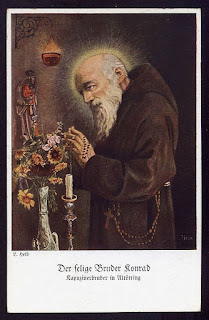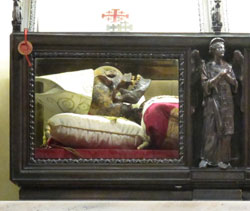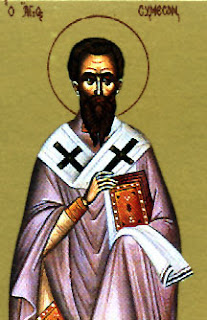ENGLISH SPEAKING SAINTS April 30
ENGLISH SPEAKING SAINTS April 30 St. Cynwl, 6th century. A hermit, the brother of St. Deinoil, noted fir his austere life in southern Wales. Several churches in the region were dedicated to Cynwl. St. Forannan, 932 A.D. Irish bishop of Domhnach-Mor, Ireland, no longer listed as a diocese. With twelve companions he went to Belgium and founded an abbey at Waulsort, on the Meuse River, becoming abbot in 962. Forannan introduced the Benedictine rule to Waulsort. Forannan went to Belgium in response to a dream. Bl. Francis Dickenson, 1590 A.D. English martyr. He was born in Yorkshire, England, and was a convert to the Church. After being ordained at Reims, France, in 1589, he returned to England and was promptly arrested. Francis was hanged, drawn, and quartered at Rochester. He was beatified in 1929. St. Gerard Miles, 1590 A.D. Martyr of England with Blessed Francis Dickinson. He was born in Lancashire, England, and went to Douai and Reims where he was ordained in 1...



















